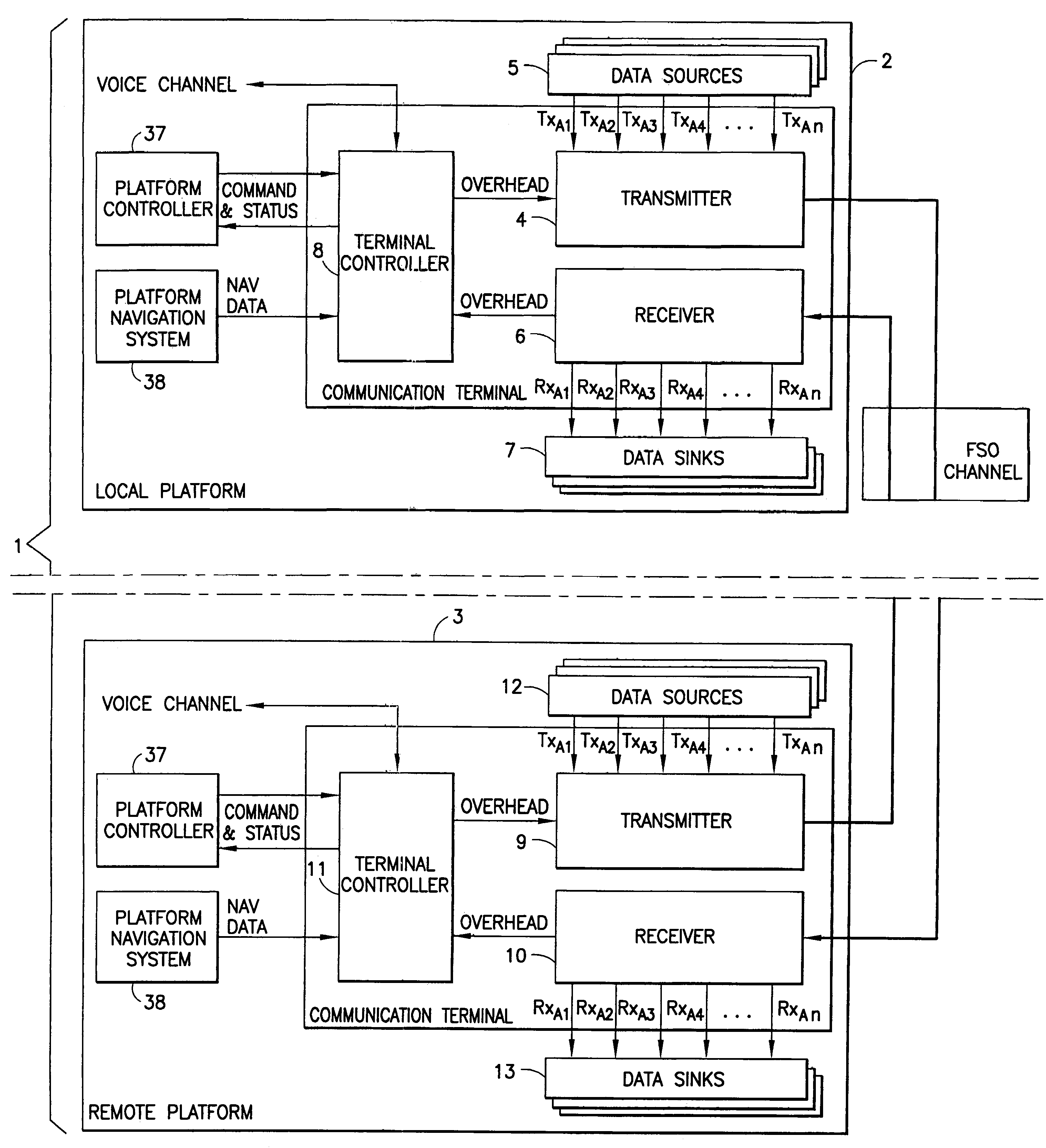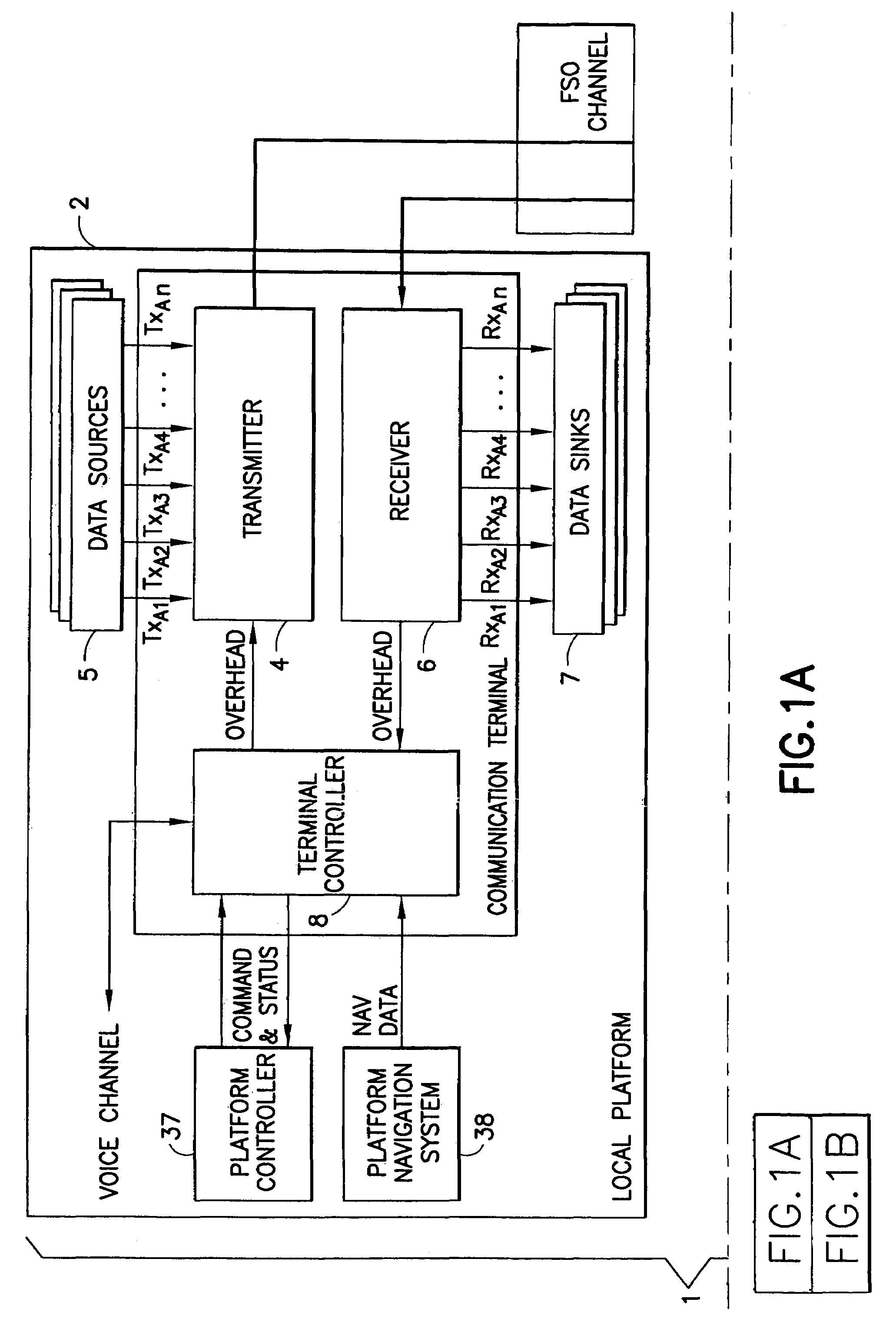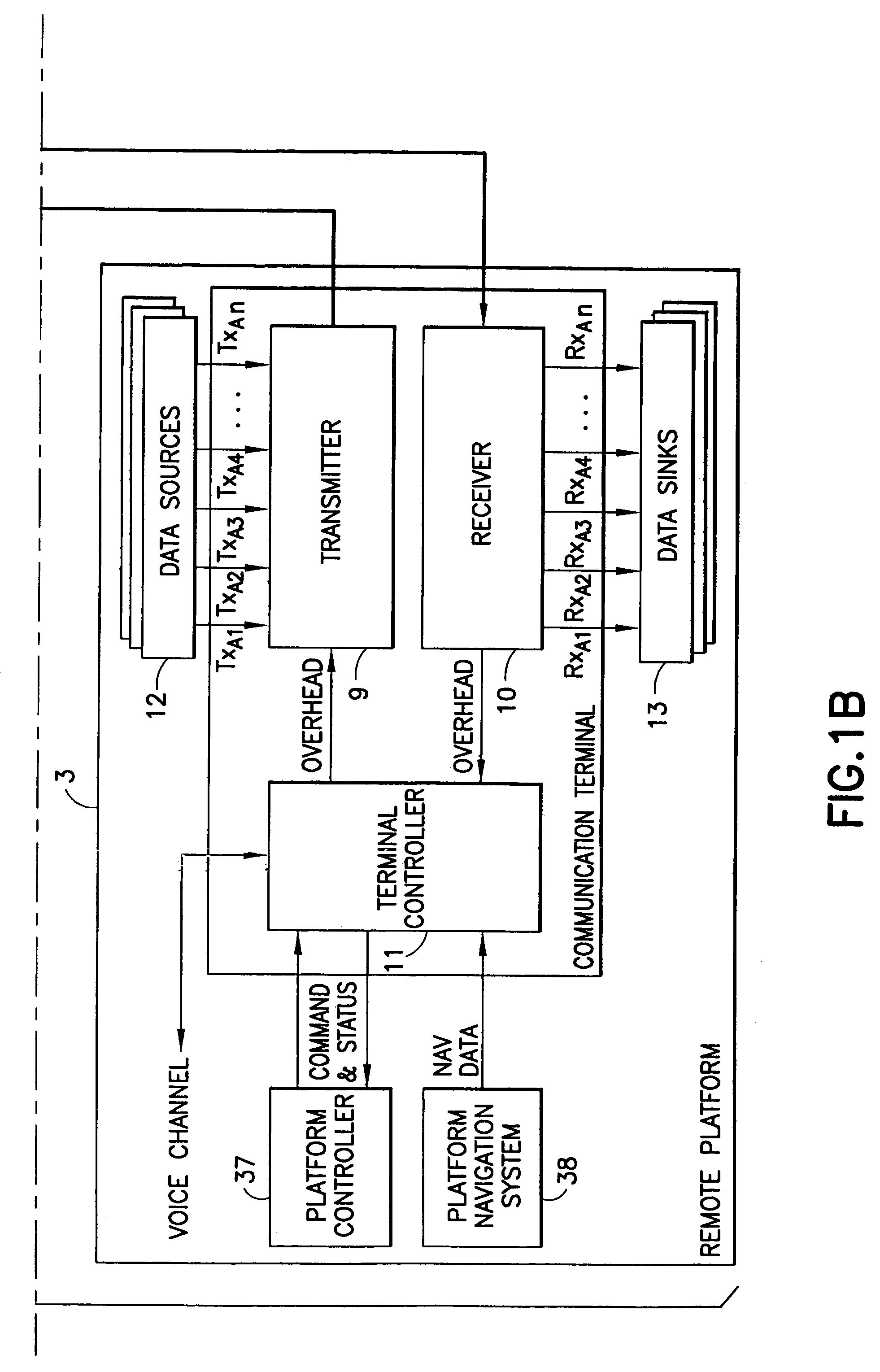Airborne free space optical communication apparatus and method with subcarrier multiplexing
an optical communication apparatus and free space technology, applied in the field of high-speed communication, can solve the problems of system data rates of the order of 1 gbps, and achieve the effect of reducing distortion and improving link performan
- Summary
- Abstract
- Description
- Claims
- Application Information
AI Technical Summary
Benefits of technology
Problems solved by technology
Method used
Image
Examples
Embodiment Construction
[0035]A communication system 1 is shown in FIG. 1 and consists of communication terminals 2 and 3 which are located remote from one another. The terminals 2 and 3 are placed on platforms that are generally moving with respect to each other, for example, an aircraft and ground station, satellite, or other aircraft (not shown) Terminal 2 consists of a transmitter module 4 that includes means to receive and process data from data sources 5. In addition terminal 2 is constructed having receiver 6 that includes means to receive, process and deliver data to data memory 7. Terminal controller 8 contains the necessary computer functions to maintain and operate the terminal 2. Terminal 3 is identical to terminal 2 and includes transmitter 9, receiver 10, and terminal controller 11 for performing the same functions at communication terminal 3. Data sources 12 and data memory 13 provide and retain data for transmission or after reception.
[0036]The transmitter modules 4 and 9 are shown in FIG. ...
PUM
 Login to View More
Login to View More Abstract
Description
Claims
Application Information
 Login to View More
Login to View More - R&D
- Intellectual Property
- Life Sciences
- Materials
- Tech Scout
- Unparalleled Data Quality
- Higher Quality Content
- 60% Fewer Hallucinations
Browse by: Latest US Patents, China's latest patents, Technical Efficacy Thesaurus, Application Domain, Technology Topic, Popular Technical Reports.
© 2025 PatSnap. All rights reserved.Legal|Privacy policy|Modern Slavery Act Transparency Statement|Sitemap|About US| Contact US: help@patsnap.com



